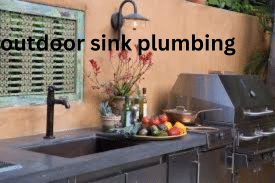In the age of environmental consciousness, managing water usage has become paramount, especially in outdoor settings where it might seem less controllable. Efficient water use in outdoor sink plumbing not only conserves a vital resource but also reduces utility bills and minimizes environmental impact. Here are some professional tips to ensure your outdoor plumbing is as water-efficient as possible.
1. Install Water-Efficient Fixtures
Start by installing fixtures designed to reduce water flow. Low-flow faucets and aerators are ideal for outdoor sinks, as they can significantly cut down on water usage without compromising performance. These fixtures are designed to use water more efficiently by mixing air with water, providing the feel of a strong flow while using much less water.
2. Use a Shut-off Nozzle
A shut-off nozzle on your garden hose attached to the outdoor sink can be a game changer. This allows you to control the flow of water instantly and prevents unnecessary wastage by stopping the water between uses. This is particularly useful when washing garden tools or filling containers where water use can be intermittent.
3. Regular Maintenance Checks
Leaks can be a major source of water wastage. Regularly check all connections, faucets, and pipes for leaks and drips. Even a small leak can waste a significant amount of water over time. Fixing leaks promptly ensures that every drop that comes through your plumbing is used effectively.
4. Implement a Greywater System
If local regulations allow, setting up a greywater system can be an excellent way to reuse water. Greywater is the relatively clean wastewater from sinks, which can be reused for watering gardens. Using greywater not only reduces the amount of freshwater you consume but also benefits your garden by repurposing nutrient-rich water.
5. Educate on Proper Usage
Efficient water use isn’t just about having the right technology; it’s also about using that technology properly. Make sure everyone in your household knows how to operate the outdoor sink and its fixtures efficiently. Simple practices like turning off the tap while scrubbing or cleaning objects can make a big difference.
6. Choose Drought-Resistant Plants
For those using outdoor sinks near garden areas, consider landscaping with drought-resistant plants. These plants require less water and are ideal for maintaining a beautiful garden without excessive water use. This reduces the demand on your outdoor sink and contributes to overall water conservation.
7. Install Timers and Sensors
Incorporating smart technology, such as timers or motion sensors, can optimize water use. Timers can be set to limit the amount of time water runs, ensuring that it is only used as needed. Motion sensors can help by activating the water flow only when presence is detected, reducing accidental or forgetful water wastage.
Conclusion
Incorporating these tips into your outdoor sink plumbing setup not only promotes efficient water use but also aligns with sustainable practices that benefit the environment. Whether you’re watering the garden, cleaning outdoor cooking equipment, or just washing up after a day of outdoor activities, thoughtful water use is key. With these professional tips, you can ensure that your outdoor plumbing system is a model of water efficiency.

